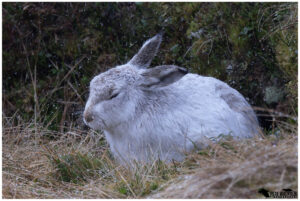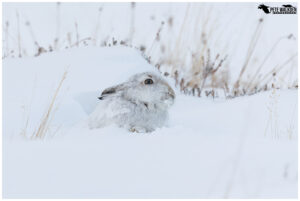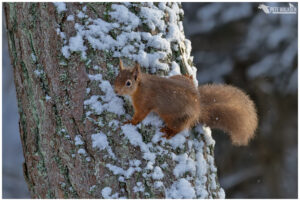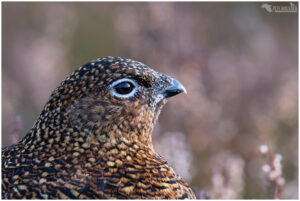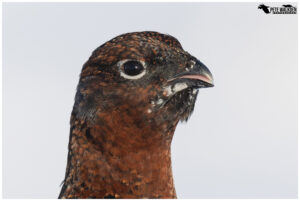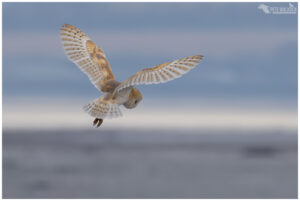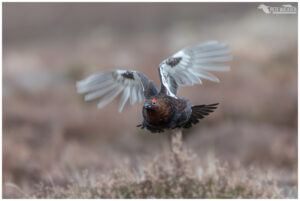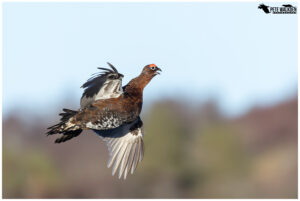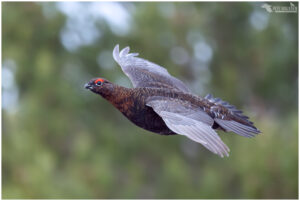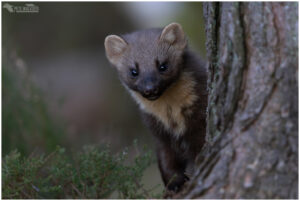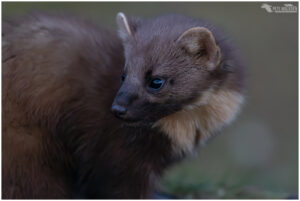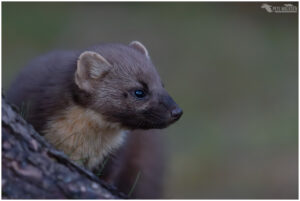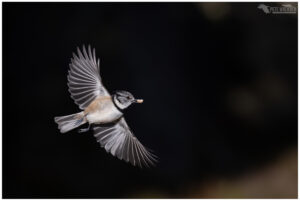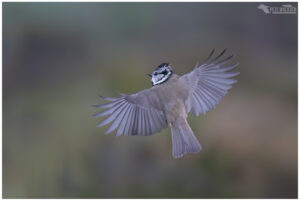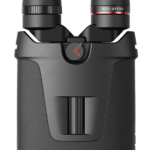
Kite APC Stabilized Binoculars
18th June 2024Introduction
Followers of me on Social Media and this website will know that back in 2020, I turned my back on mirrored cameras to purchase the Canon R5, as the attraction of silent photography and subject tracking auto-focus appealed to me more than the latest iteration of the 1DX range.
I haven't looked back, and since then have added an R7 to my camera fold. My review of that can be seen here.
That camera, while it was cheaper, less accurate at focusing and lacked the glorious image quality of the R5, saw a lot of use because my R5 had a problem with misting up in cool, damp conditions, and when I lived on Mull, that was most of the year! An issue a lot of my clients were also seeing with their R5s too.
So when the R5 Mk2 appeared on the horizon, I put my name down at the Flash Centre, and the day after they appeared in the shops, a box arrived at my home in the Scottish Highlands, for me to play with.
For me, I wanted to be able to use a professional bodied camera throughout the year, and while I'd improved the weather sealing on the original R5 with a plastic cap slotted into the hot-shoe connection, it still misted up in anything heavier than light drizzle, despite it always being protected with a Wildlife Watching Supplies cover.
- ISO 2000, 1/1000th, f/7.1, 500mm (RF100-500mm)
- ISO 800, 1/800th, f/7.1, 500mm (RF100-500mm)
- ISO 1600, 1/640th, 500mm, f7.1 (RF100-500mm)
Pros And Cons
But there were other attractions too. Pro/Pre Capture (recording images and video before you press the shutter release button) as coined by another camera manufacturer was in this one, and unlike in the R7 where the implementation was somewhat clunky and complicated, this is simple, and captures the files in RAW format.
Rolling shutter is supposed to be almost eliminated, and while I still occasionally see some of this in sequences of shots, or on slanted vertical objects when panning quickly, it's a big improvement over the original.
Image quality is still gorgeous and oozes detail from the 45MP sensor. As before the CRAW image format saves memory card space, increases the buffer size and to me, offers almost no difference in final image to the full-fat RAW format. The file sizes are slightly larger though - perhaps because of the different sensor?
On the original camera, the electronic shutter (which is what I almost always used) only offered 1 shot per press, or 20 per second, which did lead to a lot of images being taken. And there was no audible sound that could be applied to the process, unlike the R7. The mk2 camera does this now, and can also vary the electronic shutter frame rate, from 30 down to 1, in various levels. The numbers escape me, but it does mean if I'm photographing something that might move only slightly, I can drop the rate down, and leave with maybe hundreds of images, instead of thousands.
- ISO 1000, 1/500th, f/6.3, 700mm (EF500mm f/4L IS II USM +1.4x III)
- ISO 500, 1/1600th, f/6.3, 700mm (EF500mm f/4L IS II USM +1.4x III)
- ISO 1600, 1/2500th, f/7.1, 500mm (RF100-500mm)
The auto-focus is improved and works more quickly and accurately. I'd say it's on a par with the R3 now from what I can tell from friends who use that camera.
I've tried tracking red squirrels as they jump, which is tricky as they often close their eyes on take off, so makes tracking such targets challenging. I've had more success with this new camera than before. And tracking fast birds in flight such as puffins and red grouse, it has increased my hit rate, especially when they're flying towards me.
The flexibility of it is much improved on the original, offering the almost the same tech as the R1. To me though, it's good enough, and I haven't used half of what it can do, as I like the simplicity of the modes I got accustomed to on the R5.
- ISO 6400, 1/1600th, f/7.1, 500mm (RF100-500mm)
- ISO 1600, 1/2500th, f/7.1, 500mm (RF100-500mm)
- ISO 2500, 1/2500th, f/5, 500mm (EF500mm f/4L IS II USM)
- ISO 6400, 1/2000th, f/6.3, 451mm (RF100-500mm)
A lot has been said about the low light issues on this camera in that the noise is worse than the original. It might be marginally worse, but it's a 45MP sensor, so is going to have noise on it at high ISOs. Thankfully noise reducing software, especially in Lightroom and DXO PureRaw V5 go a long way to removing any, and once you've learned how high it can be pushed, you know when you can stop shooting, or switch to video instead.
- ISO 6400, 1/100th, f/4, 500mm (EF500mm f/4L IS II USM)
- ISO 2500, 1/400th, f/5, 500mm (EF500mm f/4L IS II USM)
- ISO 8000, 1/125th, f/4, 500mm (EF500mm f/4L IS II USM)
- ISO 8000, 1/125th, f/4, 500mm (EF500mm f/4L IS II USM)
Battery life is on a par with the original, though it is murdered when you use the pre capture function, as it's effectively recording images to the buffer constantly as you hold the shutter button halfway down.
Annoyingly, and in typical Canon style, they've changed the format of the battery for this model, so the original R5 batteries offer a reduced functionality set to the new ones. They initially failed to be recognised by the camera, which was more than a bit mean by Canon, who fixed this issue in a firmware update. I mean, the original batteries were £115 each, so not exactly something you want to chuck away, and they don't sell for much either.
Unlike with the original one, I don't think I'm going to bother with the grip. As with the batteries, it's a different model for this camera, so I've sold mine (along with the original R5). I quite like how light the camera is on its own. The grip made it much heavier and this was really apparent when I picked up an R3 as a comparison. The R5 with grip was noticeably heavier.
So does this one mist up in wet weather? No. Something Canon has done seems to have addressed the issue, by fitting a rubber cover over the hot-shoe connector, and I've used my camera now in all weathers, from heavy rain, to hail, sleet and snow, and had no misting up issues at all.
Another slight annoyance is the positioning of the Stills / Video switch. It used to be on the right, so I could flick it across without taking my hands away from the camera. Now it's on the left, and if I'm holding a big lens, means I have to fumble around to find it. There is a red button to start videoing without doing that, but it offers only one setting initially. I don't do a great deal of videoing, so for me, not a deal-breaker.
Given the customisation of the camera, it'd be nice if the pre-capture feature could be assigned to one of the buttons, so it could be switched on and off more easily. I've got it programmed into a Custom Menu, so I can find it from there, but it's a bit of a faff.
- ISO 1250, 1/5000th, f/6.3, 270mm (RF100-500mm) Using Pre-Capture Mode
- ISO 12800, 1/3200th, f/6.3, 270mm (RF100-500mm) Using Pre-Capture Mode
Worth The Upgrade?
The big question I'm being asked all the time now by users of the original R5 is whether to upgrade.
There's no definitive answer here as it depends on what you do with the camera, what images you're taking, and if any of the new features on the mk2 are going to help you with your photography.
For me, it was the case that I wanted to be able to use a professional body again. The R7 is a decent camera, but it's nowhere near the level of an R5. And shouldn't be; it's a third of the price. I'm actually considering selling that now, and getting another full frame camera, possibly an R6 that will offer improved low-light photography. But that's for another day.
Conclusion
I'm more than happy with the Mk2. It's an improvement on the original, still produces incredibly detailed and high quality images, has an auto-focus system rivalling the best out there, and I can use it all year round, in all weather conditions.
Now I've just got to save up for yet more batteries...


